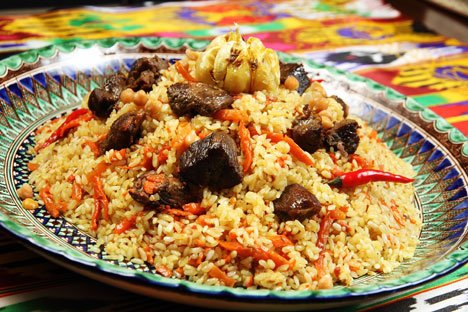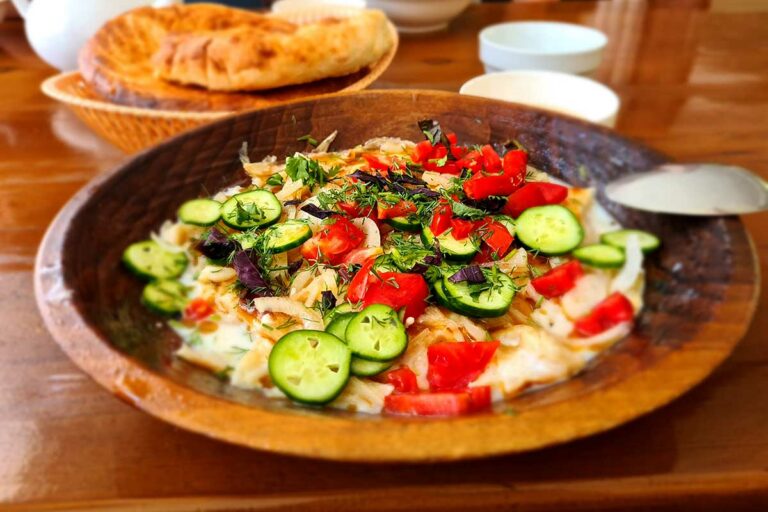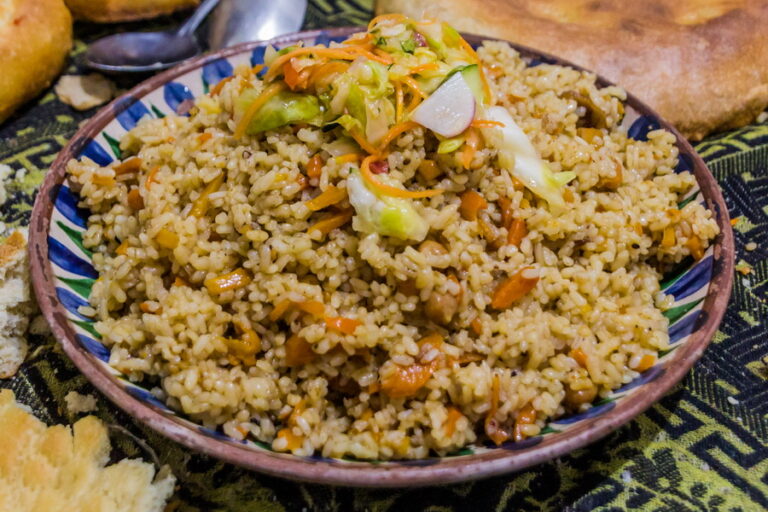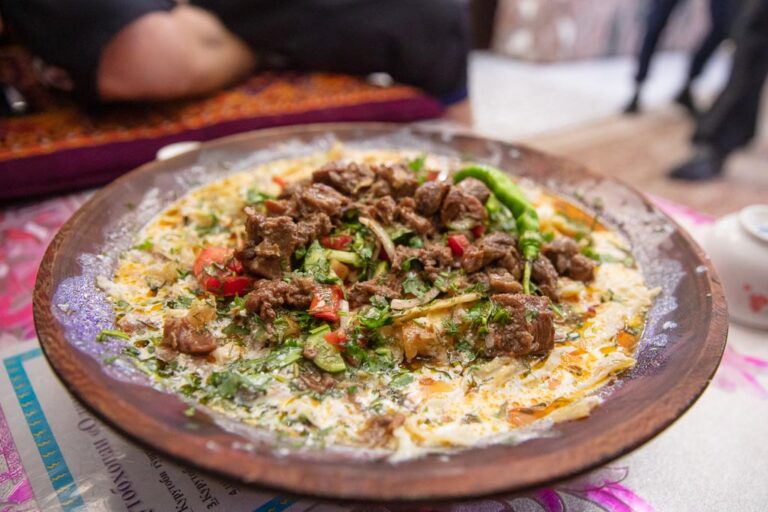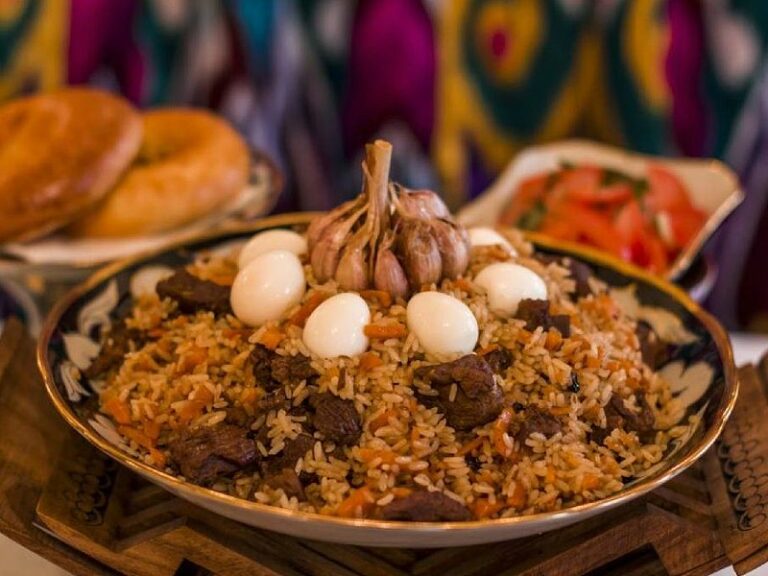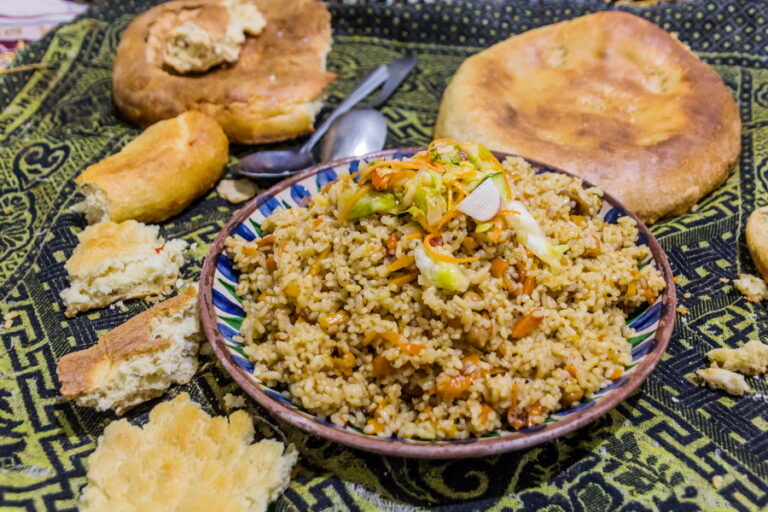Introduction: Tajik Cuisine Overview
Tajikistan, a landlocked country in Central Asia, has a unique blend of culinary styles that are influenced by its neighbors, particularly Persia and Russia. Tajik cuisine is a combination of savory and spicy flavors, which reflect its agricultural heritage, with an emphasis on meat dishes like lamb, beef, and goat. Tajik cuisine also includes a wide variety of vegetables, fruits, and grains, such as rice, wheat, and corn, which are used in soups, stews, and salads.
Persian Influence on Tajik Cuisine
Persian cuisine, also known as Iranian cuisine, has a significant influence on Tajik cuisine. The Persian Empire once ruled over Tajikistan and the region, which resulted in the transfer of Persian culinary traditions to Tajikistan. Persian cuisine is famous for its herbs, spices, and aromatic flavors, which are also reflected in Tajik cuisine. Tajik dishes like Osh, a rice-based dish, and Shurbo, a soup made with meat, vegetables, and spices, are both of Persian origin. Persian dishes like Kebab, hummus, and baklava are also popular in Tajik cuisine.
Russian Influence on Tajik Cuisine
Tajikistan was also part of the former Soviet Union, which had a significant impact on the country’s cuisine. Russian cuisine is known for its hearty and filling dishes, which use ingredients like potatoes, cabbage, and meat. Russian dishes like Borscht, a soup made with beets, and Pelmeni, a type of dumpling, are both popular in Tajik cuisine. Additionally, Russia introduced Tajikistan to tea, which is now widely consumed throughout the country.
Fusion of Persian and Russian Flavors
Tajik cuisine’s unique blend of flavors is a result of the fusion of Persian and Russian influences. The combination of Persian herbs, spices, and aromatic flavors with Russian potatoes, cabbage, and meat, has resulted in a distinct culinary style that is unique to Tajikistan. This fusion is also reflected in the use of sour cream, which is common in both Persian and Russian cuisine, and is now a staple ingredient in Tajik dishes like Osh.
Popular Tajik Dishes with Persian and Russian Tastes
Some of the most popular Tajik dishes with Persian and Russian influences include: Osh, a rice-based dish with lamb, carrots, and onions; Shurbo, a soup with meat, vegetables, and spices; Borscht, a soup made with beets and sour cream; and Pelmeni, a type of meat-filled dumpling. Other popular Tajik dishes with a fusion of Persian and Russian flavors include Lagman, a noodle soup with meat and vegetables, and Ashak, a type of dumpling filled with meat and served with a tomato sauce.
Conclusion: Tajik Cuisine’s Unique Blend of Flavors
Tajik cuisine’s unique blend of Persian and Russian flavors has resulted in a culinary style that reflects its history and cultural influences. Tajik dishes are known for their savory and aromatic flavors, which use a wide variety of herbs, spices, and vegetables. The fusion of Persian and Russian influences has also resulted in a distinct cuisine that is recognized for its hearty and filling dishes. Overall, Tajik cuisine is a testament to the country’s diverse cultural and culinary heritage.


